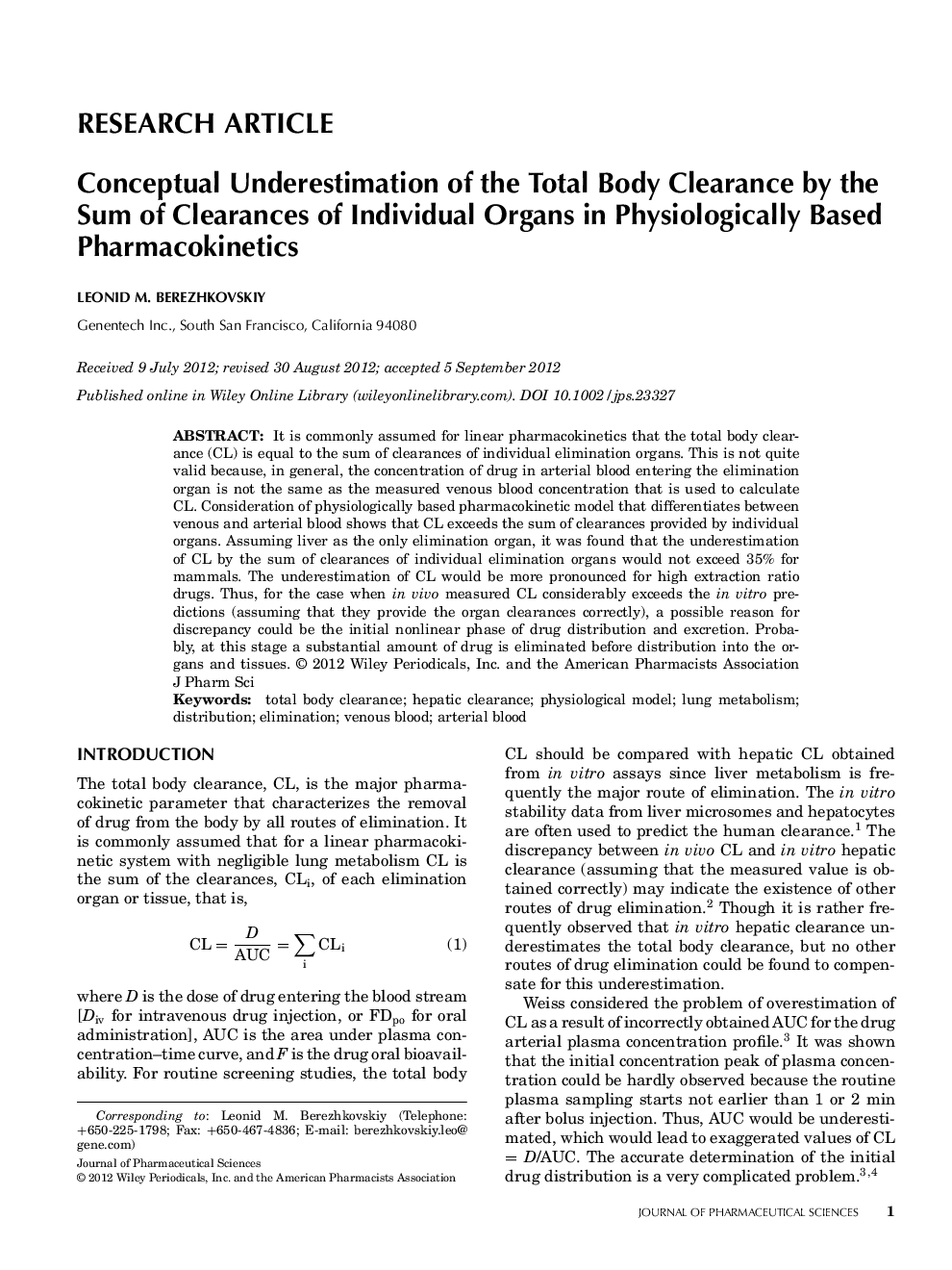| Article ID | Journal | Published Year | Pages | File Type |
|---|---|---|---|---|
| 2485657 | Journal of Pharmaceutical Sciences | 2012 | 6 Pages |
Abstract
It is commonly assumed for linear pharmacokinetics that the total body clearance (CL) is equal to the sum of clearances of individual elimination organs. This is not quite valid because, in general, the concentration of drug in arterial blood entering the elimination organ is not the same as the measured venous blood concentration that is used to calculate CL. Consideration of physiologically based pharmacokinetic model that differentiates between venous and arterial blood shows that CL exceeds the sum of clearances provided by individual organs. Assuming liver as the only elimination organ, it was found that the underestimation of CL by the sum of clearances of individual elimination organs would not exceed 35% for mammals. The underestimation of CL would be more pronounced for high extraction ratio drugs. Thus, for the case when in vivo measured CL considerably exceeds the in vitro predictions (assuming that they provide the organ clearances correctly), a possible reason for discrepancy could be the initial nonlinear phase of drug distribution and excretion. Probably, at this stage a substantial amount of drug is eliminated before distribution into the organs and tissues.
Keywords
Related Topics
Health Sciences
Pharmacology, Toxicology and Pharmaceutical Science
Drug Discovery
Authors
Leonid M. Berezhkovskiy,
